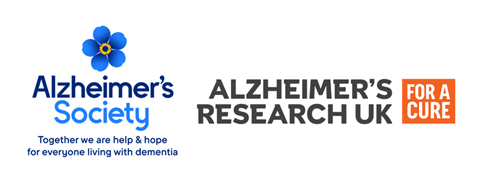- Phase II trial will assess efficacy and tolerability of NX210c in Amyotrophic Lateral Sclerosis (ALS) patients
- 80 patients due to be enrolled with first results expected in early 2026
- NX210c drug candidate allows for promising approach to repairing Blood Brain Barrier (BBB) which is impaired in neurodegenerative diseases such as ALS
10 April 2024: Axoltis Pharma, a French biopharmaceutical company dedicated to developing therapeutic solutions for neurodegenerative diseases, today announced the authorisation from ANSM, the French agency for the safety of health products, to launch the SEALS study. This phase II clinical trial of drug candidate NX210c in patients with Amyotrophic Lateral Sclerosis (ALS) is the first to target the integrity of the Blood Brain Barrier (BBB).
ALS is a fatal neurodegenerative disease affecting 50,000 individuals in Europe at any time, resulting in 10,000 deaths each year. It predominantly affects motor neurons in both the brain and spinal cord. This leads to muscular weakness and paralysis, with most patients succumbing to respiratory failure within, on average, two to five years. Today, there is no cure for ALS and the only approved drug in the EU for the disease is Riluzole, prolonging survival for a median of just two months. Therefore, ALS remains a progressive and fatal neurologic disease of high unmet need.
It has been shown that the BBB, which protects against undesirable blood components crossing into the brain, is impaired in several neurodegenerative conditions, such as ALS, and may even be disease-driving. Axoltis’ NX210c is an innovative therapeutic agent with the ability to help the BBB recover its integrity, in addition to offering neuroprotection and promoting neurotransmission. NX210c is a cyclic peptide of 12 amino acids designed from the most conserved sequence of the type 1 thrombospondin repeats of the SCO-spondin.
The therapeutic approach of recovering BBB integrity in ALS patients is very promising; here at Axoltis we are proud to have a marked head start in the clinic with NX210c. The use of advanced analytical methods will offer a fresh approach to tackling ALS and contribute to the understanding of neurodegenerative diseases overall.
Dr Annette Janus, neurologist and chief medical officer at Axoltis
SEALS is a double-blind, randomised, placebo-controlled, multicentric phase II study that will assess the efficacy, safety, tolerability and pharmacokinetics of NX210c treatment in ALS patients. Its primary objective is to assess the effect of NX210c via two markers: Neurofilament Light chain (NfL) concentration in the blood, as a diagnostic and prognostic of axonal damage relevant to ALS, as well as the ratio of albumin concentration between CerebroSpinal Fluid (CSF) and blood, which has long been a reliable biomarker of BBB integrity. The study will also evaluate the effect of NX210c on functional outcomes and select secondary biomarkers. The first results are expected by early 2026.
Axoltis aims to enroll a total of 80 ALS patients in a trial planned in France with at least 15 investigating sites. Patients will receive a 10-minute IV infusion of the study drug at doses of 5 mg/kg or 10 mg/kg NX210c, or placebo, three times a week over four weeks. Patients will be able to continue the standard of care they have been receiving prior to receiving the study drug and will be followed-up for three months after the end of the treatment. Axoltis will receive operational support from the ACT4ALS/MND network.
Dr Emilien Bernard, head of the Lyon ALS center at the Hôpital Neurologique et Neurochirurgical Pierre-Wertheimer, Hospices Civils de Lyon, who will act as investigation coordinator, said: “This approach is very interesting and promising. It could certainly play a role on the path to finding a therapeutic solution to this terrible disease.”
“Receiving the authorisation to start this phase II clinical trial is a major achievement for the company, especially in ALS, where the unmet medical need is so important. In addition, there is a broad range of applications in CNS diseases where the BBB recovery could change their course, such as multiple sclerosis, Parkinson’s disease, Alzheimer’s disease, Huntington’s disease and more,” added Dr. Yann Godfrin, chief executive officer at Axoltis Pharma.
In another pioneering step, the clinical trial will also incorporate statistical enrichment of the placebo group by adding virtual, in silico patients, based on computational methods of historical control data. This modelling, performed in collaboration with InSilicoTrials (Italy) will create predictions of disease progression in virtual subjects based on actual enrolled patients’ baseline characteristics.
Part of the study is supported by the Region Auvergne-Rhône-Alpes and the French Government through i-Demo Régionalisé, a France 2030 grant.
About NX210c
A large glycoprotein (SCO-spondin) produced by the subcommissural organ (SCO) plays crucial roles in neurogenesis and axonal guidance during embryogenesis. Only remnants of the SCO subsist in adults, thereby halting the production of SCO-spondin, which may account for a lack of regeneration and recovery in patients with neurological disorders. In this context, Axoltis is developing NX210c, a cyclic peptide of 12 amino acids designed from the most conserved sequence of the type 1 thrombospondin repeats of the SCO-spondin, as an innovative therapy for neurodegenerative diseases and traumas. NX210c is protected by seven patents fully owned by Axoltis Pharma, including one for composition of matter. In 2022, the FDA granted Orphan Drug Designation for NX210c in ALS. In 2023, the safety data collected in a phase Ib multiple ascending dose study showed NX210c to be well-tolerated and without safety concerns.
For more details: https://www.axoltis.com/our-product/properties/
About Axoltis Pharma
Axoltis Pharma, a French biopharma company, develops innovative drugs for neurodegenerative and neurotraumatic diseases with a high unmet medical need. Headquartered in Clermont-Ferrand, with offices in Lyon, (France), Axoltis has established several partnerships with internationally recognised academic and private labs to develop its lead product, NX210c. The team is highly experienced in drug development, especially for neurological applications.
http://www.axoltis.com

